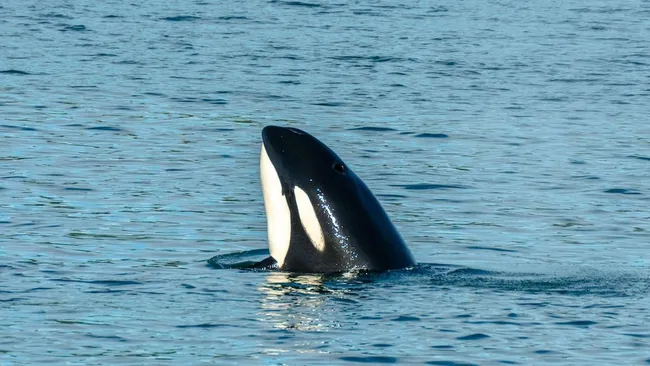Scientists are suggesting a significant reclassification within the orca population, proposing that killer whales be divided into two distinct species. Traditionally categorized as a single species, recent research suggests that two orca populations in the eastern North Pacific Ocean warrant separate recognition.
Published in the journal Royal Society Open Science on March 27, the study compared two groups of orcas — resident and Bigg’s killer whales — highlighting notable differences. Resident killer whales, characterized by their rounded dorsal fins, form tight-knit pods and primarily prey on salmon and fish. In contrast, Bigg’s killer whales, also known as transients, possess pointed and straight dorsal fins, travel in smaller groups, and predominantly hunt larger prey like seals and other whale species. These distinctions, initially observed by Canadian scientist Michael Bigg, underscore the behavioral and dietary disparities between the two groups.
Moreover, genetic analysis spanning decades indicates that these orca populations likely diverged around 300,000 years ago and occupy distinct branches on the killer whale family tree. Despite cohabiting the same waters, there is no evidence of interbreeding between the two groups.
“We started to ask this question 20 years ago, but we didn’t have much data, and we did not have the tools that we do now,” explained study lead author Phillip Morin, a population geneticist at NOAA’s Southwest Fisheries Science Center. “Now we have more of both, and the weight of the evidence says these are different species.”
Consequently, scientists propose renaming resident killer whales as Orcinus ater, signifying “dark” or “black” in Latin. Collaborating with Indigenous North Americans, efforts are underway to determine a fitting common name for the species. Meanwhile, Bigg’s killer whales are suggested to retain their current common name while adopting the scientific name Orcinus rectipinnus, translating to “upright fin” in Latin.
The proposed scientific names are subject to review by a taxonomic committee from the Society for Marine Mammalogy, marking a potential paradigm shift in our understanding of killer whale taxonomy.
